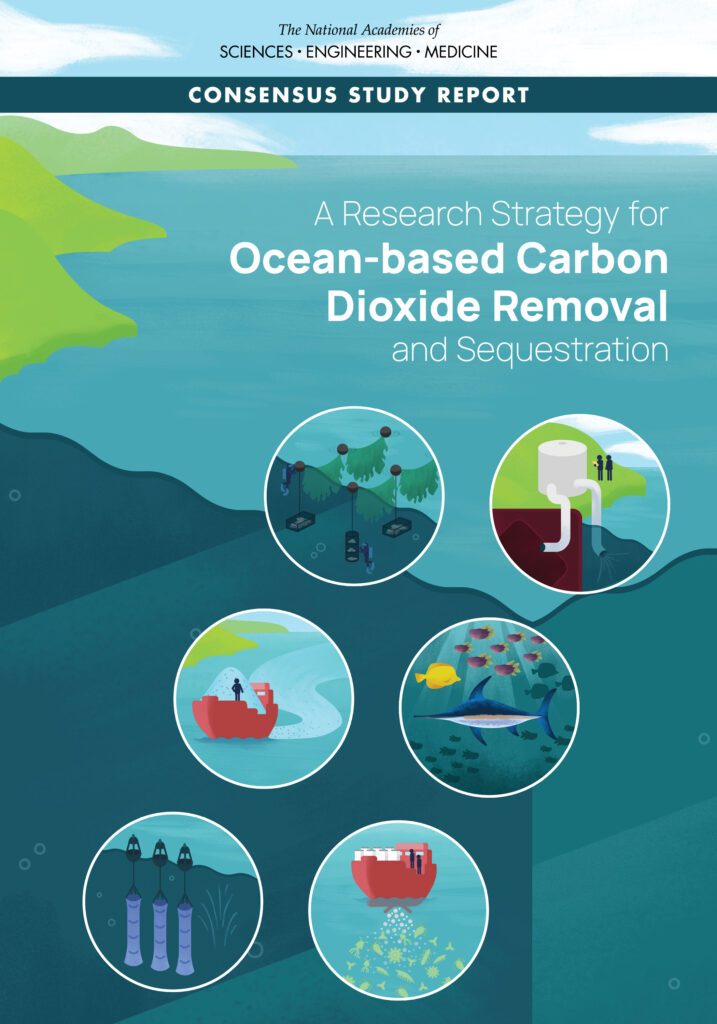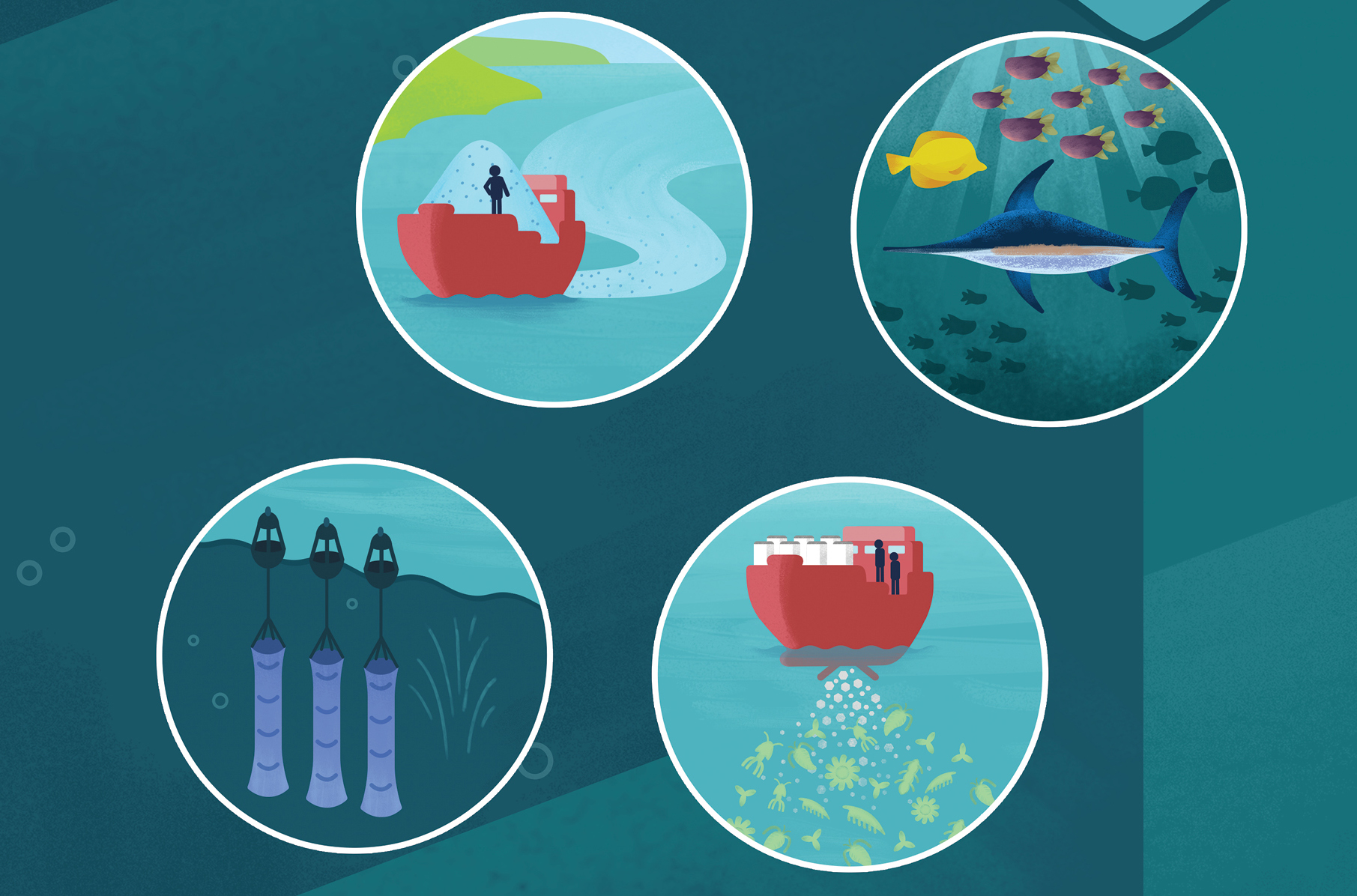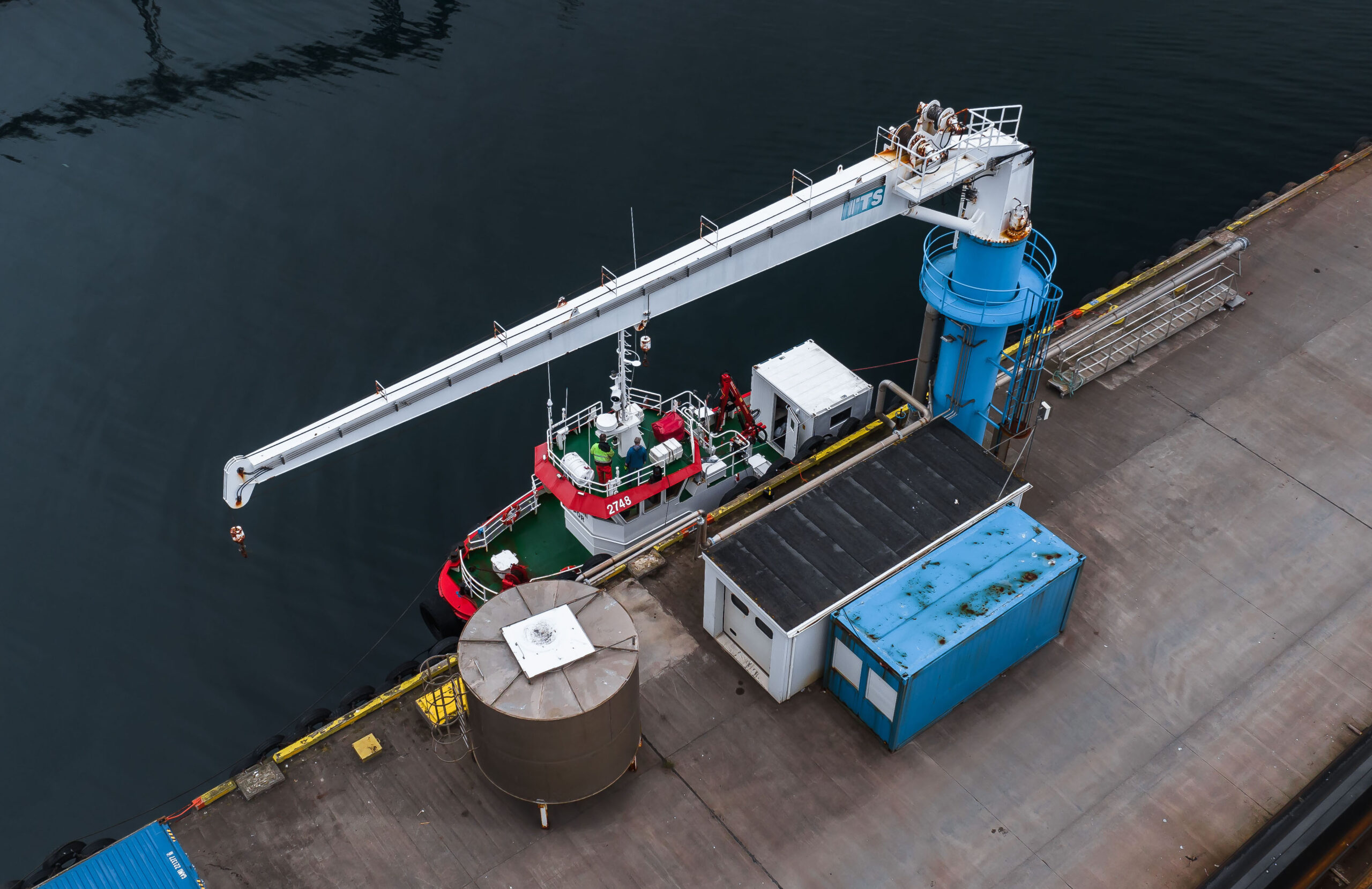The Carbon to Sea Initiative and National Academies of Sciences, Engineering, and Medicine (NASEM) are establishing a new standing committee dedicated to sharing scientific updates and maintaining a repository of the latest information on ocean-based carbon dioxide removal (oCDR). Carbon to Sea is providing the initial grant to stand-up the new committee, which will launch in March 2025 and be housed within NASEM’s Ocean Studies Board.
The committee will regularly review and make updates to NASEM’s seminal 2022 report on the emerging field of oCDR: A Research Strategy for Ocean Carbon Dioxide Removal and Sequestration. The original report outlines six oCDR strategies that have been identified for high theoretical potential for uptake and sequestration of human-produced carbon dioxide. However, the ocean climate field and our collective understanding of oCDR science is evolving rapidly — reflective of the urgent need for large-scale carbon removal as part of a comprehensive climate strategy. To keep pace with these advances, the new standing committee will ensure the report remains up-to-date as a centralized, digital, and trusted resource. Updates to the report will focus on sharing information relevant to the potential climate impact, scalability, cost efficacy, social and environmental impacts, and regulatory landscape of oCDR.
“Carbon to Sea is looking forward to working closely with the National Academies Ocean Studies Board to provide trustworthy information on the fast-developing field of ocean-based carbon dioxide removal (oCDR),” said Antonius Gagern, Executive Director at Carbon to Sea. “We’re excited to see what new partnerships, community and policymaker engagements, and scientific advancements the standing committee will make possible.”
This latest grant announcement reflects Carbon to Sea’s commitment to scientifically rigorous evaluation of oCDR as a potential climate solution, and to promote collaboration, transparency, and professionalization of this growing field.The standing committee will include 14-18 rotating members from a range of scientific expertise, including: oceanography, engineering, economics, and social sciences. Committee members will annually review the NASEM report, make as-needed updates, conduct ad-hoc peer reviews, and — where possible and appropriate — commission new scientific studies to fill knowledge gaps.
“There is new information on marine CDR to digest every single day,” said Kelly Oskvig, Director of the future standing committee. “We are thrilled to establish a new standing committee focused on providing updated and vetted information to the marine CDR community.”
Learn more about the standing committee and follow along with updates HERE.

Read NASEM’s 2022 report on the emerging field of oCDR: A Research Strategy for Ocean Carbon Dioxide Removal and Sequestration.



